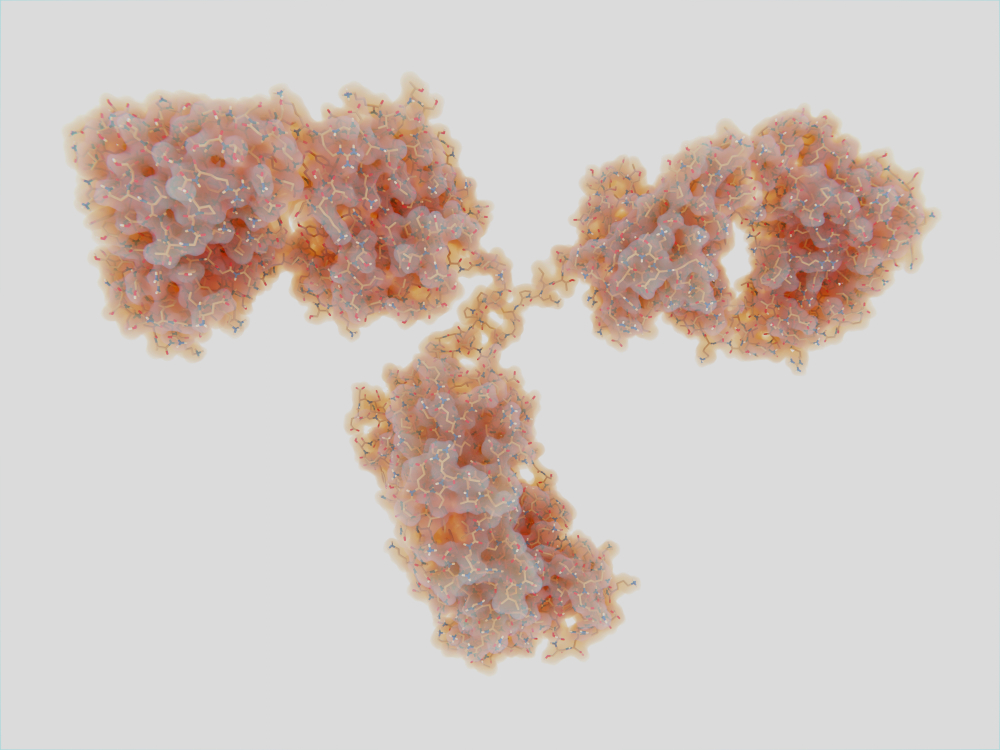MOUSE ANTI-HUMAN PAPILLOMA VIRUS L1 (5308)
Human Papilloma virus L1 antibody (clone 5308), is a mouse monoclonal antibody that recognises major capsid protein L1 from human papilloma virus (HPV) genotypes 6, 11, 16, 18, 31, 33, 45, 52 and 58. This antibody is suitable for western blotting, immunihistology and ELISA applications.
PRODUCT DETAILS – MOUSE ANTI-HUMAN PAPILLOMA VIRUS L1 (5308)
- Mouse anti-Human papilloma virus L1 capsid protein monoclonal IgG2b antibody (clone 5308).
- Greater than 95% purity by SDS-PAGE and buffered in PBS, pH7.4.
BACKGROUND
Human papilloma viruses (HPV) are small, non-enveloped, DNA viruses that belong to the family Papillomaviridae. Over 150 genotypes have been identified to date which are divided into 5 genera, based on DNA sequencing. HPV viruses all share a common non-enveloped, icosahedral structure. The HPV viruses possess a double-stranded, circular, DNA genome, which encodes for 6 early proteins E1-E7, and two late structural proteins L1 and L2.
Human papilloma viruses (HPVs) are globally widespread and are tropic for epithelial cells. Different HPVs display a preference for distinct sites of the body, infecting either cutaneous or mucous membranes (typically the genital tract, oral cavity, respiratory tract or conjunctiva). Most infections, caused by HPVs, are asymptomatic or cause benign warts. Some HPVs cause latent infection which can be re-activated under certain circumstances, such as stress and immunosuppression (McMurray, HR).
However, a large subset of HPVs, referred to as high-risk genotypes, can cause infectious lesions that can lead to premalignant and malignant cancers of the genital tract. At least thirteen HPVs are recognised as high-risk genotypes that can cause malignant disease of the genital tract in both men and women. The most common high-risk genotypes are HPV 16 and 18, which are frequently associated with cancer of the cervix. HPV early proteins E6 and E7, in high-risk HPV genotypes, differ from their low-risk HPV counterparts. They are reported to interfere with cell proliferation and differentiation machinery leading to malignant transformation of HPV-related lesions. (Doorbar, J).
Transmission of high-risk HPV genotypes occurs via skin-to-skin contact during sexual activity, with most sexually active individuals being infected during their lifetime. Although high-risk HPV infection is common, most infections are resolved by the individual’s cell mediated immune response and do not give rise to cancer of the cervix. In recent years, a successful vaccine has been developed that protects against four HPV strains 6, 11, 16 and 18. Clinical trials suggest that the vaccine prevents pre-cancer caused by HPV 16 and 18 in 99% of cases in young women (WHO).
REFERENCES
- McMurray HR, Nguyen D, Westbrook TF, McAnce DJ. 2001. Biology of human papillomaviruses. Int J Exp Pathol. 2001 Feb;82(1):15-33. Review.
- Doorbar J, Egawa N, Griffin H, Kranjec C, Murakami I. Human papillomavirus molecular biology and disease association. 2015. Rev Med Virol. Mar;25 Suppl 1:2-23.
- World health organization: Biologicals, Human Papillomavirus

